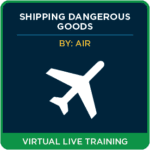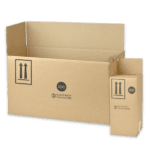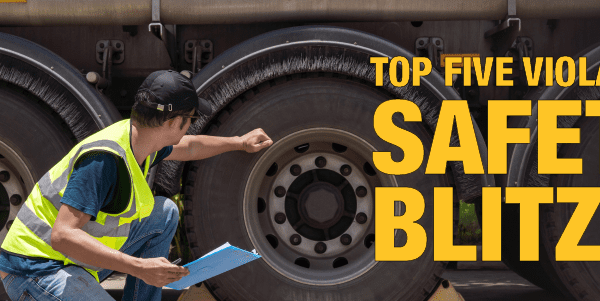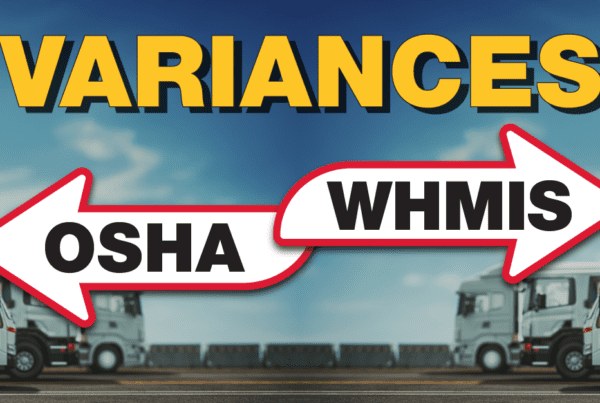
Do You Need Training to Ship Limited Quantities?
One of the best solutions to the headaches involved in the transportation of dangerous goods is to use the “limited quantity” option. By keeping individual packages relatively small, the risk is lowered, and some nice exceptions to the regulations become available. But obviously, to use limited quantities, you have to know how this works. How small is “small”? Are you excepted from all the requirements of the regulations, or only parts of them?
To know how to ship limited quantities safely, you obviously need to understand the appropriate regulations on them, and that means training. However, requiring full dangerous goods training can be a serious impediment to small package shippers who aren’t part of a larger organization. Let’s say a customer of an online cosmetics company orders an aerosol body spray, but wishes to return it. It could probably go as a limited quantity, but it’s unlikely the customer will have an official hazmat certification. Can they figure the rules out for themselves, or will they have to have official dangerous goods training.
It turns out our fictional customer will have an easier or harder time depending on how they’re shipping it, and which country they’re in. Let’s take a look at the various options we might encounter in North America.
Ground Shipment in Canada
In Canada, ground shipments fall under the Transportation of Dangerous Goods Regulations (TDGR). Limited quantities are covered by section 1.17, and in this case our shipper is in luck. Subsection (2) of this section states that “Part 3 (Documentation), Part 4 (Dangerous Goods Safety Marks), Part 5 (Means of Containment), Part 6 (Training), Part 7 (Emergency Response Assistance Plan) and Part 8 (Reporting Requirements) do not apply to the handling, offering for transport or transporting of limited quantities of dangerous goods on a road vehicle, a railway vehicle or a vessel on a domestic voyage if each means of containment is legibly and durably marked on one side, other than a side on which it is intended to rest or to be stacked during transport, with the mark illustrated in subsection (5).” So, all the shipper has to do is make sure the packaging meets the size and durability requirements of section 1.17, put on the mark that is helpfully illustrated in subsection (5), and no training is required.
Of course, this does assume that the shipper either is reasonably good at reading regulatory text to understand all the points of section 1.17, or is assisted by someone (perhaps the reverse logistics department of the cosmetics company) who can step them through the procedure. But at least they don’t need to have an official certificate of dangerous goods training to return the shipment.
Ground Shipment in the United States
In most ways, shipment of limited quantities in the United States are similar to those in Canada. The size limits are usually the same (although there are exceptions) and the marking requirements are similar. No hazard labels or placards are required, and limited quantities in most cases do not require hazmat shipping papers in the U.S. However, while the U.S. “Hazardous Materials Regulations” in Title 49, Code of Federal Regulations (49 CFR) give exceptions from training for many small quantity options, such as excepted quantities they have not done so for limited quantities. So, in our U.S. situation, anyone offering a limited quantity for transport should have to be trained, tested, and certified as required by Subpart H of Part 172 of 49 CFR.
The U.S. Department of Transportation (DOT) is aware that full hazmat training can be quite a heavy requirement for those who only transport limited quantities. Therefore, it’s currently requesting information from stakeholders to see if training is really necessary for those who never ship anything other than limited quantities or other excepted materials. In the Advanced Notification of Proposed Rulemaking HM-265A, the DOT has asked stakeholder shippers and carriers to provide comments on the financial impacts of requiring training for those only involved in limited quantity shipments, versus the probability of an accident occurring that could have been prevented by a training requirement. While there will likely be significant debate on this issue, it would appear that the DOT is at least open to removing the training requirement as they have done for other small quantity and low risk shipments.
Marine Shipment under the International Maritime Dangerous Goods Code (IMDG Code)
While the ground transport regulations in Canada and the U.S. essentially treat limited quantities as “almost” non-regulated, other than the packaging quantity limits and the limited quantity mark on each package, the IMDG Code takes a more restrictive approach. While the individual packages would be treated much like those for ground, the IMDG Code does require them to be listed as dangerous goods on the shipping paper, and even has marking requirements for freight containers that limited quantities. Therefore, the IMDG Code specifically says that limited quantities are still subject to the requirements of Part 1, chapter 1.3, Training. So only trained personnel can offer dangerous goods for transport by ocean.
Air Shipment under the IATA Dangerous Goods Regulations (DGR)
As we usually see, air is the most restrictive of all the modes when it comes to dangerous goods regulation. Under the IATA Dangerous Goods Regulations (based on the legal requirements of the ICAO Technical Instructions for the Safe Transport of Dangerous Goods by Air), limited quantities are essentially treated as regular dangerous goods. The only exception they have from the normal requirements is some packaging relief – they don’t have to be packed in UN specification packaging. Otherwise, they require full marking and labelling, a full Shipper’s Declaration for Dangerous Goods and, as you might expect, full training for transporting dangerous goods.
What Do You Need to Do to Comply?
So, how do you proceed when shipping limited quantities. If you’re in Canada, and you want to use ground carriers, it’s relatively simple:
- Read TDGR section 1.17 thoroughly;
- Check the appropriate size limit for your product in TDGR Schedule 1, Column 6a.
- Assemble a package that is sturdy enough to withstand normal conditions of transport without likelihood of leaking or other damage.
- Mark the package with the limited quantity mark shown in section 1.17.
No official dangerous goods training certificate would be necessary, but the person preparing the shipment would have to have a working knowledge of how to follow section 1.17.
For ground shipment in the U.S., shippers and carriers should have certification meeting the requirements of 49 CFR Part 172 Subpart H, which includes testing and a written certification being prepared. However, they wouldn’t have to be trained in areas not related to limited quantities, so the training itself could be relatively short.
Since the IMDG Code and the ICAO/IATA system for air treat limited quantities as regulated dangerous goods, shippers by those modes should receive training that addresses the full requirements of the regulations, as well as an emphasis on limited quantities specifically.
If you need an off-the-shelf solution, keep in mind that ICC has online training for both the United States and Canada in shipping small quantities. If you’re in the U.S., check out our training course “Shipping Small Quantities by Ground (49 CFR) and Air (IATA).” And if you’re looking for Canadian training that includes both TDGR section 1.17 and the IATA rules for limited quantities, have a look at “Shipping Dangerous Goods in Small Quantities by Ground (TDG) and Air (IATA).” These short courses give a quick foundation in the small quantity provisions, perfect for those who don’t ship larger packages.
Contact Us
Do you have any questions about shipping limited quantities or other small quantities in the United States or Canada? Our team of experts is just a call away for our customers at 855.734.5469 or send us an email, we’re happy to help.
Stay up to date and sign up for our newsletter!
We have all the products, services and training you need to ensure your staff is properly trained and informed.
 Quantity Related Quantity RelatedLabels |
 Shipping Dangerous Goods Shipping Dangerous Goodsby Air |
 4G UN Combination Boxes 4G UN Combination Boxes |
References:
“Hazardous Materials Regulations,” Title 49 of the Code of Federal Regulations, https://www.ecfr.gov/current/title-49/subtitle-B/chapter-I/subchapter-C
Justice Canada, “Transportation of Dangerous Goods Regulations,” https://laws-lois.justice.gc.ca/eng/regulations/sor-2001-286/
International Civil Aviation Organization, Technical Instructions For The Safe Transport of Dangerous Goods by Air (Doc 9284), https://www.icao.int/safety/DangerousGoods/Pages/Doc9284-Technical-Instructions.aspx
International Air Transport Association, IATA Dangerous Goods Regulations, https://www.iata.org/en/programs/cargo/dgr/
International Maritime Dangerous Goods Code, https://www.imo.org/en/OurWork/Safety/Pages/DangerousGoods-default.aspx






 ICC USA
ICC USA ICC Canada
ICC Canada